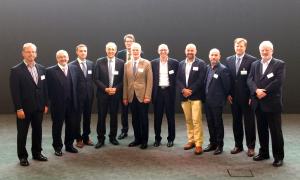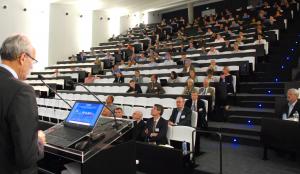The conference was opened by ITER Director-General Bernard Bigot who introduced the project and its specificities to the more than 100 non-ITER participants in the audience. Asked whether he would see ITER as "project" or rather a "program" in project management parlance, the Director-General replied that it is both. "It's a project because we need to deliver a facility that suits the requirements of the world scientific community. But it also can be considered a program because of the number of stakeholders, the long timescale and the fact that we need to associate industry and laboratories."
Mr Bigot's introduction was followed by an inspiring talk on the promise of fusion by Steven Cowley, Chief Executive Officer at the Atomic Energy Authority of the United Kingdom (UKAEA). According to Cowley, the fusion experiments that will take place at ITER in the future will be a defining moment in the history of the world, one that he hopes to witness first-hand from the ITER control room (see related
article in this issue).
Stephen Carver, senior lecturer at Cranfield University (UK), told the audience that project success comes down to good communication in his talk titled "Creating Vision with Storytelling." "People are not inspired to act by reason alone," he stressed. "That's why stories are vital for leaders. And you here at ITER have a good story to tell. A hell of a good story!"
Roberto Saban, Head of Engineering from CERN, concluded the presentations by describing the evolution of project management tools and techniques at the Large Hadron Collider (LHC). According to Saban, Earned Value Management (EVM) wasn't implemented until mid-way through the project. However, it has become a part of the project management toolkit that is used by every project since that time.



